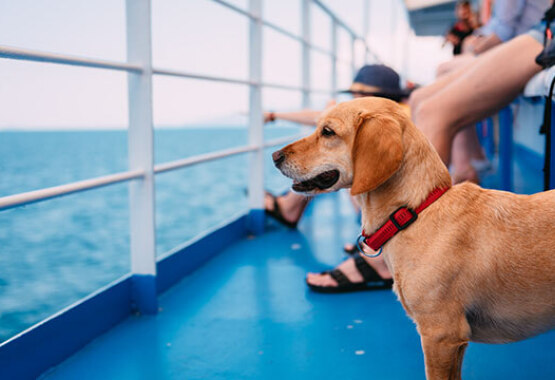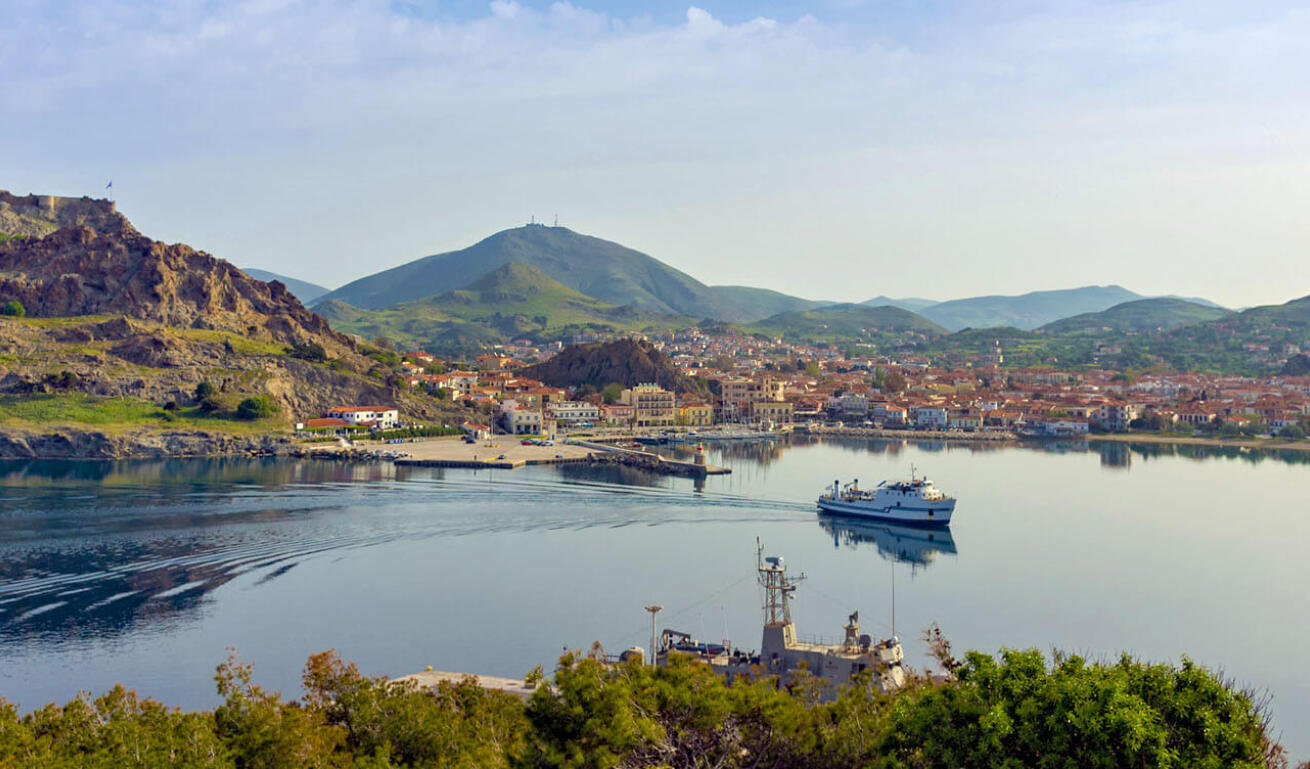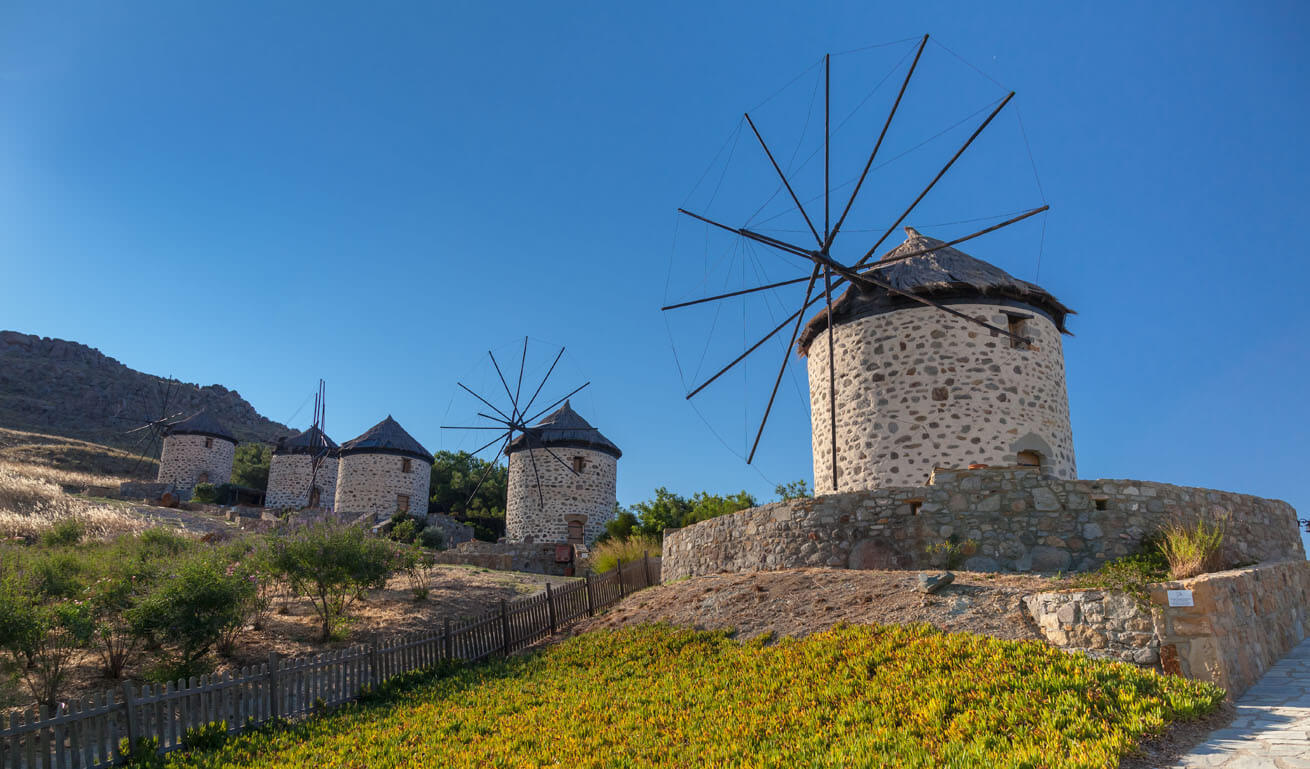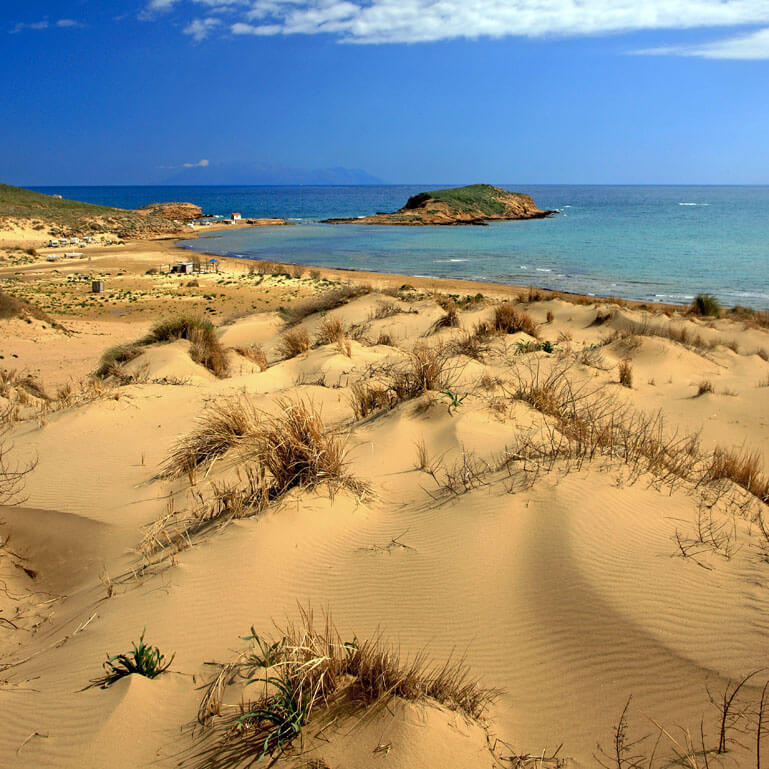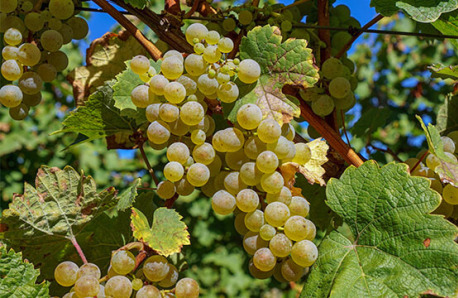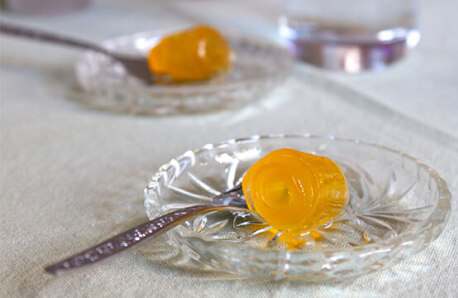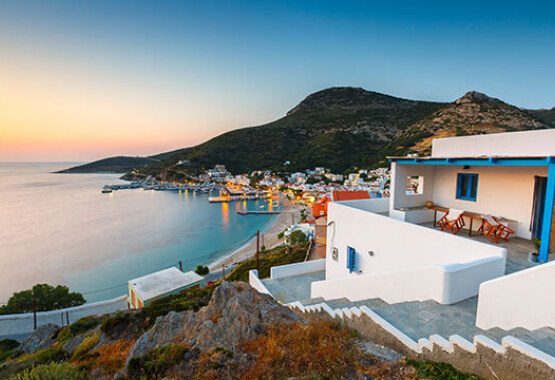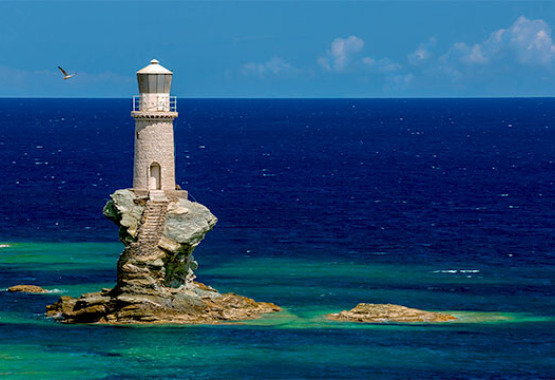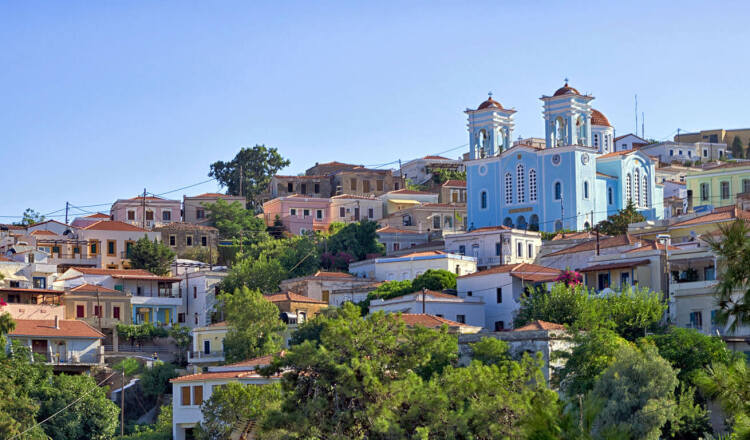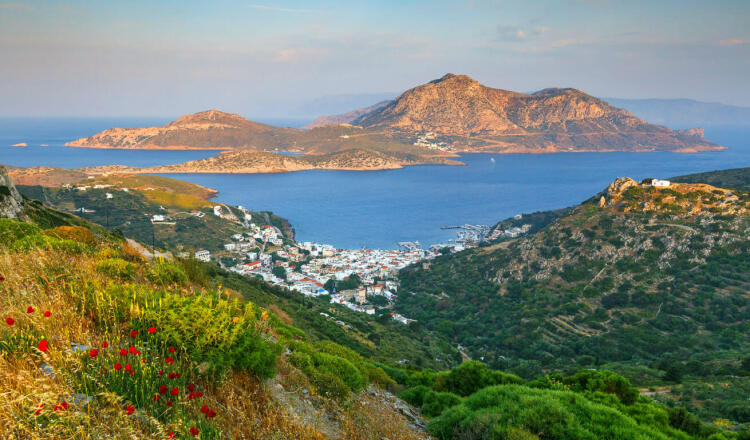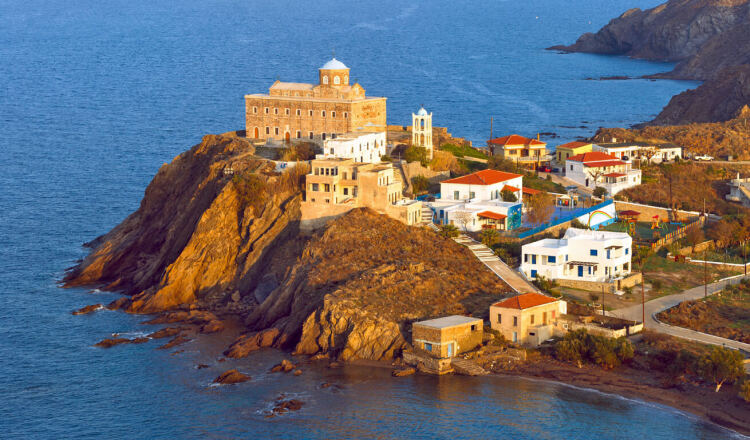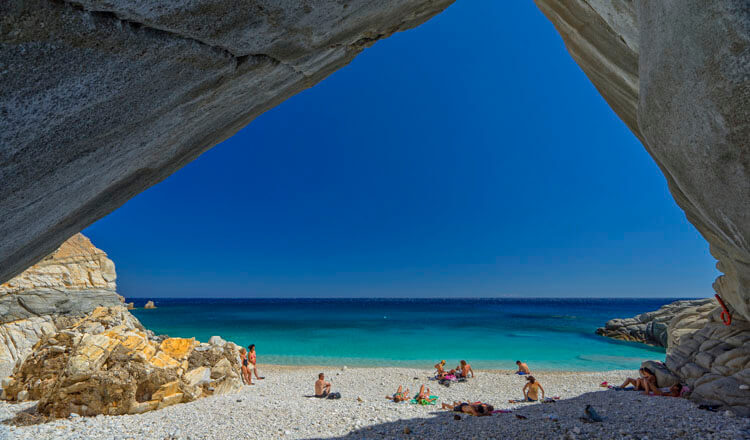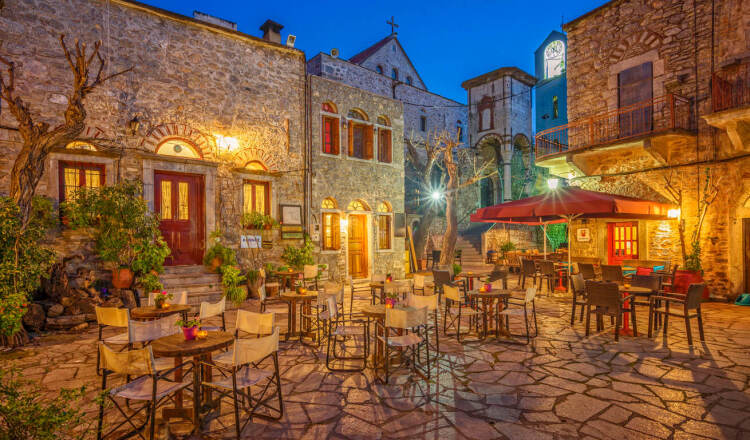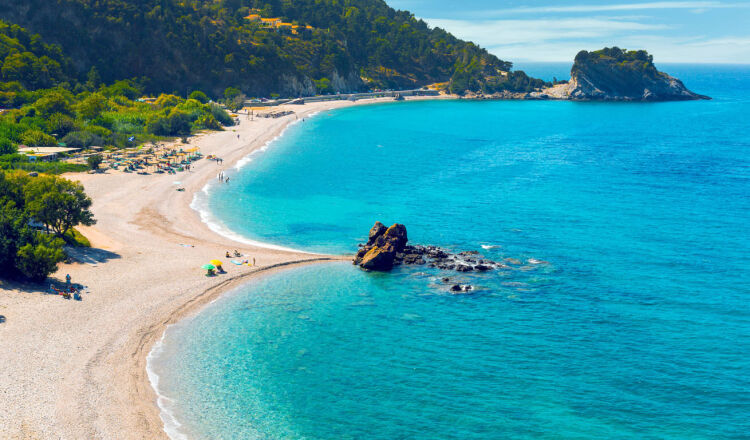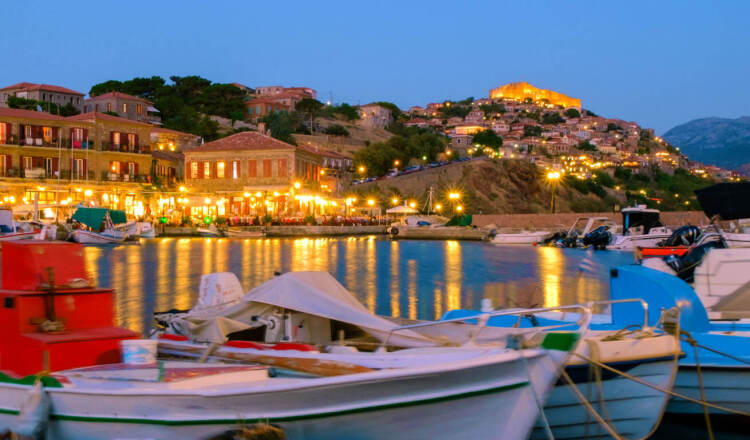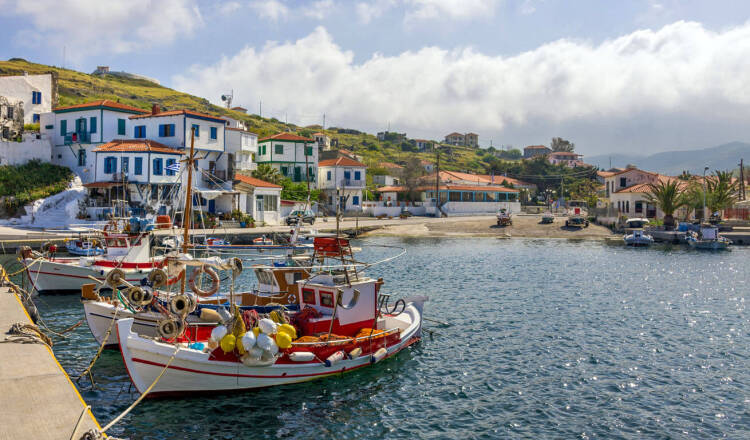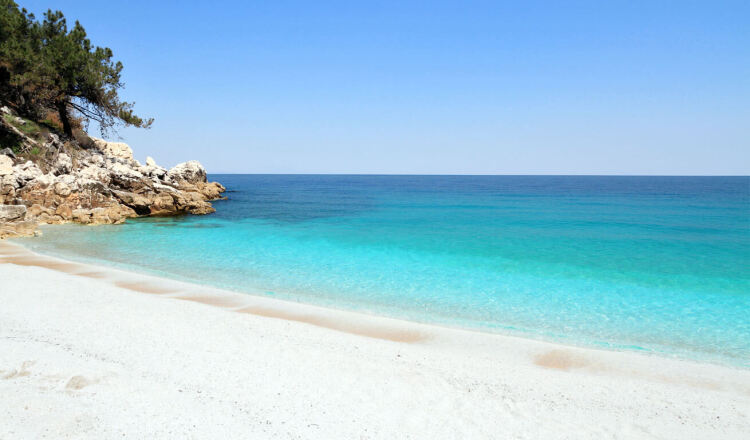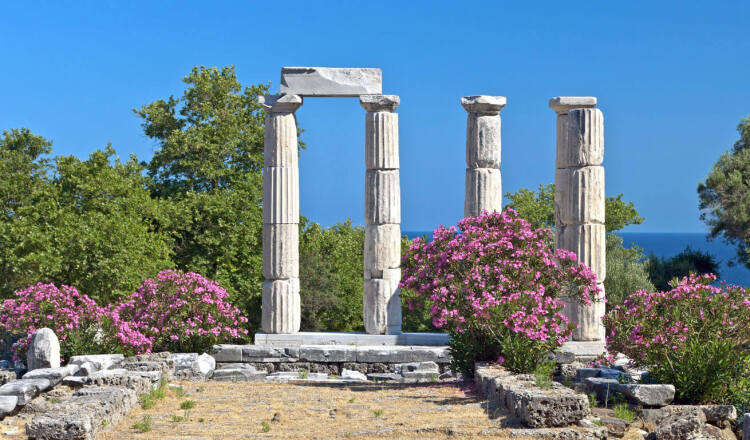The villages on Limnos are true masterpieces of stone masonry with elaborate stone reliefs of great beauty.
Start your tour of the island with a visit to Myrina, its capital and port town, whose buildings are shaded by poplar, plane and eucalyptus trees. Myrina was built on the location of the ancient town on the island’s west coast and its history goes as far back as that of the island. The town has been named after the wife of Thoas, the first king of Limnos. The slab-paved alleys, the seaside promenade with the old traditional residences and the castle overlooking the town are some of the most picturesque views on the island. Stroll along its traditional backstreets and climb to the Castle; if you’re lucky enough you might spot one or two of the local deer that roam about the area, while you enjoy the lovely unimpeded vista to the sea and the town. The Byzantine castle was built on a rocky precipitous peninsula, originally by the Byzantine Emperor Andronicus I Comnenus, and took its final shape in the early 13th century by Filocalo Navigajoso, the Venetian Megadux [Grand Duke] of Limnos. Inside the castle, you will see the ruins of a mosque, dating to the period of the Ottoman occupation.
Go for a romantic stroll in Romeiko Gialo [waterfront area], where most of the beautiful stone-built residences are. Visit the Archaeological Museum, which is housed in a neoclassical building of the late 19th c. You will see prehistoric exhibits from the Poliochni area, finds from Myrina and Hephaistia, dating from the Geometric period [aka the Greek Dark Ages] and the Hellenistic Period (late 4th - 1st c. BC), and items from Kaveirio dating from the Archaic Period (7th - 6th c. BC) and the Roman times. Make sure you also take a trip to the nearby hot springs area in Therma (4km from Myrina).
Visit Agia Triada Cathedral (1724) and its two beautiful belfries; walk up Kakavos Hill towards a rock recess where the country chapel of Koimisi tis Theotokou (Panagia Kakaviotissa) is located. From inside the courtyard of Porto Myrina Palace Hotel you can reach the temple of goddess Artemis (Avlonas area); the monument’s stages of construction date from the Archaic to the Hellenistic Periods. The main building had an outdoor stone-paved courtyard flanked by side rooms used during the religious services.
Short journeys from Myrina
Head 5.5 km N of the capital and visit Kaspakas, a picturesque little village with stone-paved alleys, which was built in such a way as to remain unseen from the sea, for fear of the pirates. It would be a good idea to go there during the Carnival celebrations, and on St. George’s feast day (April 23rd). Make sure you also stop by the waterfalls in the area of Agios Ioannis and the nearby beach, as well as the one at Karvounolakkas.
If you are a wine lover, Agios Dimitrios village (10 km NE of Myrina) is the place for you to be! This is where the greatest volume of the local wine making takes place: we’re talking about the legendary Muscat of Alexandria varietal wine of Limnos. This is also the place of origin of the island’s orchestras.
Take a trip to Kontias, one of the biggest and most beautiful villages of Limnos. It is built on a pine-tree hill, with traditional stone-built houses, deserted windmills and the picturesque church of Agios Dimitrios with its beautiful stone belfry. Visit the Folk Art Museum at Portiano village; you’ll see traditional local costumes, a loom, textile manufacturing implements, houseware, farming tools etc. Make sure you also visit Tsimandria village for the Panagia festival (Dormition of the Virgin Mary) on August 15th. Go swimming at Zemata and Nevgati beaches.
East Limnos
Nea Koutali
This seaside village was built after the end of the Greek-Turkish War (1922) by the Greek refugees who fled Koutali, their home island in the Sea of Marmara, Turkey, and sought refuge on Limnos Island. It used to be a famous village of sea sponge harvesters - one of many such places across the Aegean Sea. The fragrant pine tree forest and the proximity to the sea have helped shape this area’s cool climate and its beauty. Visit the Exhibition of Sea Sponges and take a trip to the neighbouring villages of Kallithea (see the Ioannidios School building - 1854) and Livadochori with its stone-built houses (2 km N). It’s located 16.5 km E. of Myrina.
Moudros
Moudros is the second most populated town on Limnos, and its older capital. It is famous for the petrified forest in the area. Much like Sigri’s petrified forest on Lesvos Island, there are fossilised tree trunks here, as well as leaves, fruit, and roots of palm trees that are 20-22 million years old! The harbour is on a cove that is considered one of the most sheltered in the Mediterranean; for this reason, it was used during the Balkan Wars (1912 - 1913) and World War I as a base by the Greek fleet. Go swimming at the beaches Fanaraki, Mikro Fanaraki, Chavouli, Parthenomyto and Skidi. Visit the “Sardine Festival”, which takes place at Moudros in August; you’ll taste fresh local sardine dishes and other treats as well as the flavourful wines produced on the island.
Kaminia
This hamlet is located by the site of Poliochni, a prehistoric settlement, among the most important ones in the Aegean Sea during the 3rd millennium BC. It was founded in the late 4th - early 3rd millennium BC on a hill in Vroskopos cove. It has known several architectural and cultural growth periods, which bear the names of colours: Black, Azure, Green, Red, Yellow, Grey and Violet, representing the expansion stages of the settlement’s residential area. Visit also the little church of Agios Alexandros, where an ancient column was found with inscriptions on it in the local dialect. Specialists believe it to be related to the Etruscan language. Go swimming at Voroskopos and Agios Ioannis beaches. Kaminia is located 31.5 km E. of the capital.
North Limnos
Kornos
This is where you’ll taste traditional spoon sweets, halva, mastic, and sesame seed spread (tahini), and they’re all produced in the village. Visit the 19th c. churches of Agios Andreas and Koimisi tis Theotokou [Dormition of the Mother of God], to see their remarkable murals. The neoclassical buildings of the village are also a pretty sight. Go swimming by the shores of Cape Mourtzouflos. Therma is an area with mineral hot water springs (temperature: 39-43º C) near Kornos, and it’s absolutely worth visiting. North of Katalakkos village, by Gomati Cove, you will see huge sand dunes on the mountain, called Pachies Ammoudes; the landscape is very similar to the Sahara. Kornos is located 8.5 km NE of the capital.
Repanidi
This large village is next to the ruins of a castle at Kotsinas location. Visit Zoodochos Pigi Church on a beautiful hilltop spot by the sea. Take a trip to the Agiochoma area, a place where “the Limnian earth” used to be extracted in antiquity. This earth was used by Ippocrates (aka the Father of Medicine) as one of his most precious medicinal substances. In this location you will also see the silos that locals had hewn into the rock for their cereal storage. Go swimming at Kotsinas and Bournias beaches. Repanidi is located 25.5 km NE of Myrina.
Kontopouli
This village of beautiful stone-built houses and hospitable locals is to be found on a fertile plain. There are pottery and religious painting workshops. Kontopouli used to be a place of exile; Yiannis Ritsos, the famous 20th c. Greek poet was banished here in the late ‘60s - early ‘70s. From here, you can take a trip to Cape Plaka, the island’s northernmost tip, and see the impressive lighthouse.
Make sure you visit the archaeological site of Hephaistia town (3 km N.). This was the biggest town of Limnos, second to Myrina, during the ancient historic times. The finds of the excavations provide evidence about the area’s continuous habitation from the Late Bronze Age until the Byzantine Period. You will see the sanctuary of the Great Goddess of Limnos, as well as the cave of Filoktitis, the legendary king of Thessaly who was stranded on the island while he was on his way to fight the Trojan War, and lived in this cave for 10 years. Tradition has it that this cave is also connected with the sanctum of Kaveirio Temple, located on the side of the low hill which descends into the sea and forms Cape Chloe. The temple dates back to the 8th c. BC. The location provides a fine view of Kaveirio Temple on Samothrace Island (to the North).
The area also includes beautiful landscapes such as Lake Alyki (North) and Lake Chortarolimni (South); these are wetlands of great beauty that provide shelter and breeding areas for rare and protected bird species, such as the impressive flamingoes.
South Limnos
Skandali
This is one of the island’s oldest villages. See Agios Nikolaos Church (1908) as well as Touloumpa, the old water pump in the centre of the village. Go to the festival which takes place on September 6th - 7th, by Agios Sozon Church - the island’s patron saint - 2km SE of Fisini village. Go swimming at Louri beach. Skandali is located 39 km SE of Myrina.
